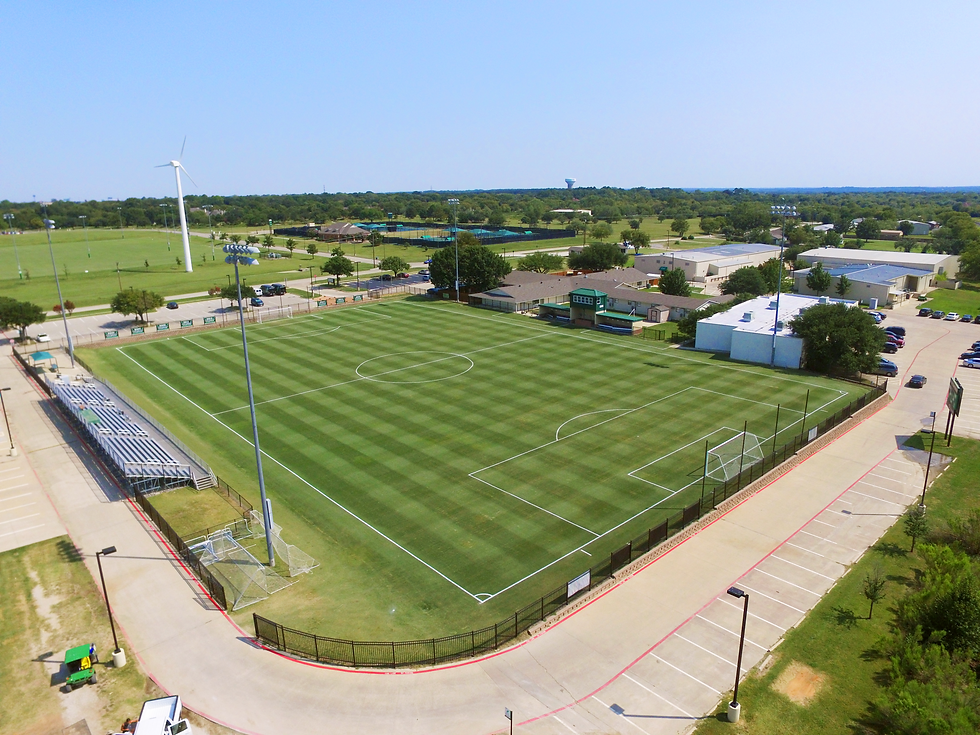Which Ryegrass Blend Is Right for Your Athletic Fields? (Based on Budget & Maintenance Level)
- Brannon Burks
- Oct 17
- 4 min read

Is your athletic facility’s maintenance program running on a tight budget, or do you have a dedicated crew and robust maintenance plan? When it’s time to overseed, how do you pick a ryegrass blend that matches your resources, without overspending or overcommitting?
The right ryegrass isn’t just about performance or color, it’s about balance. Matching the seed to your budget, staff, and field use ensures better results all season long.
In this guide, we’ll break down the most common ryegrass options: from budget-friendly annual rye to high-performance perennial blends, and share which fields they fit best, along with the pros and cons of each approach.
Note: The price ranges listed in this article reflect 2025 market pricing. Seed costs can fluctuate year to year based on supply, demand, and regional availability, so be sure to confirm current pricing before planning your overseed program.
Annual Ryegrass — The Budget-Conscious Choice
2025 Cost Range: $35–$45 per bag
Annual ryegrass is the go-to option for athletic programs with smaller budgets or limited maintenance capacity. It germinates quickly, delivers an instant pop of green, and holds up surprisingly well under normal traffic.
Best of all, annual rye transitions naturally as temperatures rise, allowing your Bermuda to reclaim the surface without chemical or mechanical removal, perfect for programs without extensive spring resources.
Just don’t confuse annual rye with annual bluegrass (poa annua), they are very different species!
Used By: Houston Christian University, Texas A&M–San Antonio
Pros:
Lowest upfront cost
Fast germination and early playability
Easy natural transition back to warm-season turf
Cons:
Lighter color and coarser texture than perennial rye
Shorter lifespan under heavy use
Less visual impact compared to premium blends
If your fields sit idle during the winter or have limited staffing, annual ryegrass can be a smart, low-risk way to keep them green and playable.
Annual/Perennial Mix — A Balanced Blend
2025 Cost Range: $50–$55 per bag
Blended ryegrass options bridge the gap between performance and practicality. These mixes combine the quick establishment and transition benefits of annual rye with the deeper color and durability of perennial types.
This makes them ideal for athletic programs with moderate budgets, schools or municipalities that need good color and coverage without taking on the costs or transition challenges of a full perennial blend.
Pros:
Balanced choice for mid-range budgets
Improved winter color and density over annual
Easier transition than pure perennial rye
Cons:
Slightly higher cost
Color and texture can vary across the mix
Still requires regular maintenance to perform its best
This option delivers solid playability and color through the season without pushing the limits of your maintenance crew.
Three-Way Perennial Rye Blend — Standard Premium Blend
2025 Cost Range: $65–$75 per bag
For programs with full-time turf managers and larger budgets, a three-way perennial rye blend delivers top-tier color, density, and performance. These seeds establish strong, fine-textured turf with excellent wear tolerance and aesthetic appeal, the kind that gets noticed under Friday night lights.
Because newer varieties are increasingly heat-tolerant, they can be tougher to transition naturally in spring. Facilities using perennial rye typically plan for either chemical removal or cultural practices like verticutting to help Bermuda recover.
Used By: Baylor, UTSA, UNT, Rice and numerous public and private high schools
Pros:
Deep, rich green color and fine texture
Outstanding wear and traffic tolerance
Ideal for high-profile fields with heavy play
Cons:
More difficult and labor-intensive to transition
Higher seed and input costs
Greater disease and nutrition management needs
For well-supported programs, perennial rye remains the standard for professional-quality winter turf.
Elite Rye Options — For Top-Tier Facilities
2025 Cost Range: $80+ per bag
Used primarily at elite collegiate and professional venues, these specialty ryegrasses are bred for exceptional density, color uniformity, and recovery speed. They offer unmatched playability, but they also demand expert management and significant resources.
Pros:
Unparalleled color and consistency
Exceptional wear recovery and surface quality
Cons:
Very high cost
Requires experienced management and aggressive transition planning
These are the blends you’ll see at nationally televised venues: impressive, but not necessary for most athletic programs.
Choosing the Right Seed for Your Situation
The best ryegrass for your fields depends on your resources, expectations, and maintenance plan.
If your budget is limited or your fields sit unused in the winter, annual rye is a great fit. For programs balancing appearance with practicality, a blended mix hits the sweet spot. And for schools or facilities with the staff and funding to support it, perennial rye creates a championship-level look and feel.
Whatever your goals, the right ryegrass can make your fields look and perform their best, but only if it fits your operation.
Still deciding whether overseeding is the right move for your facility this season? Check out our guide, Should I Overseed My Athletic Fields? Pros, Cons, and Alternatives, for a deeper look at when and why overseeding makes sense.
Need Help Deciding or Getting the Job Done?
At Sports Field Solutions, we can not only supply seed, we can help with broadcasting and establishment of your overseed program to ensure the best results.
Whether you’re looking for affordable annual rye or a professional-grade perennial blend, our team can help you choose the right mix, time it correctly, and handle all of the heavy lifting.
Contact us today to discuss your overseeding plan and get your fields ready for the next season!
.png)

Comments